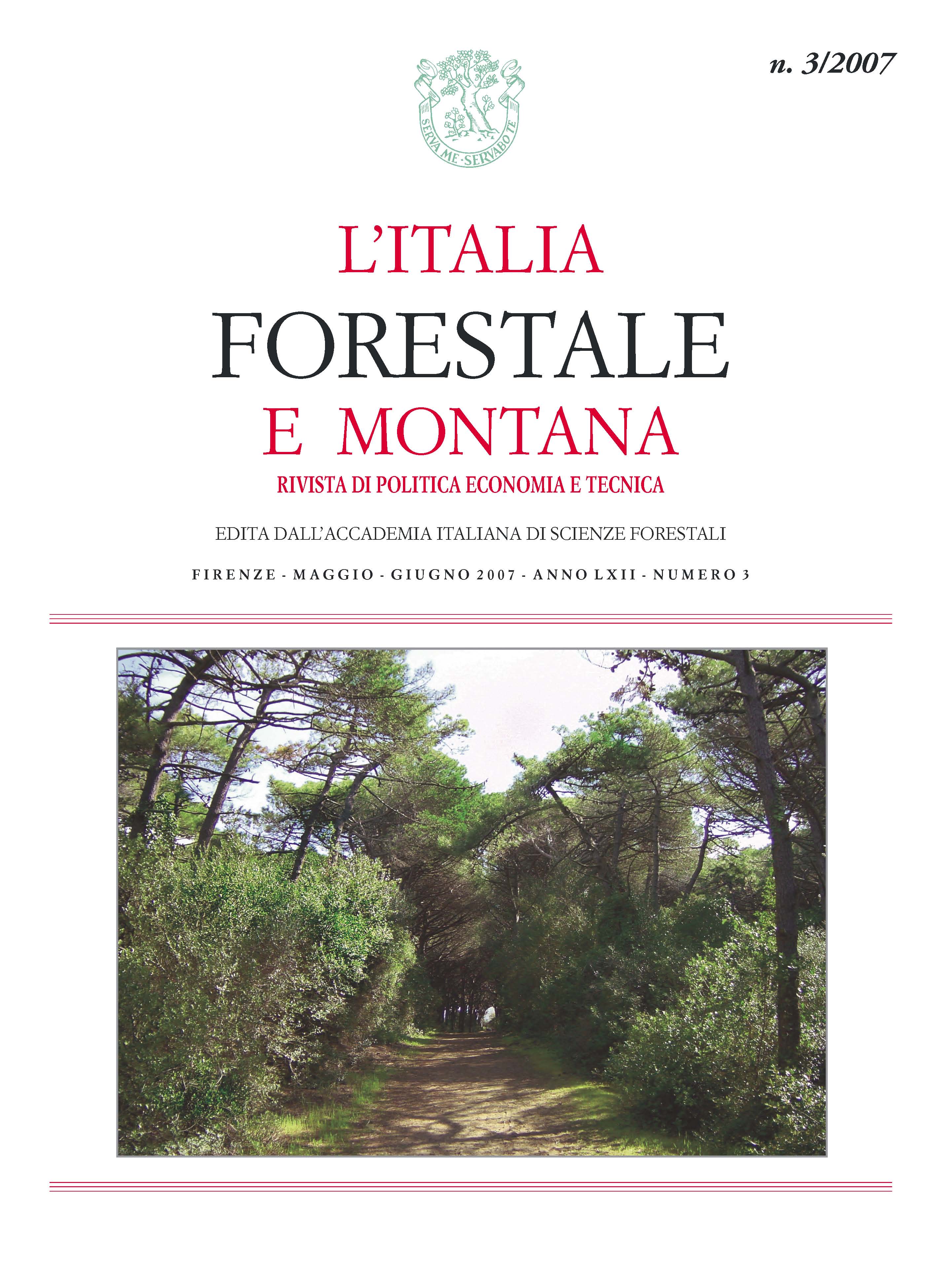Articles
Testing multilevel analysis of structural diversity in a Fagus sylvatica stand with old-growth chracteristics.
Published 2007-06-10
Keywords
- multiresolution segmentation,
- QuickBird imagery,
- tree-based structural indice,
- diameter distribution,
- gaps
- beech,
- Italy ...More
Copyright (c) 2007 Italian Journal of Forest and Mountain Environments

This work is licensed under a Creative Commons Attribution-NonCommercial 4.0 International License.
Abstract
The analysis of forest structure is a valuable support tool for forest management. Usually, it is investigated through data acquired by field survey. Multispectral remote sensing is now able to provide information from very high resolution satellite sensors and the object oriented segmentation techniques are particularly efficient to exploit such data. In this work the segmentation of a QuickBird image (spatial resolution = 2,8 m) is used to quantify some aspects of the structural diversity of a Fagus sylvatica stand with old-growth characteristics, located in central Italy (northern Latium).We used three different scale levels to analyze the spatial relationships, the species mingling and the size dominance among single trees, by applying a set of neighbourhood-based indexes. Differences among the dbh distributions were highlighted by the absolute discrepancy algorithm and the Kolmogorov-Smirnov test, at each examined scale level. The association between natural regeneration and gap and extended gap sizes was also analyzed. In the examined conditions, the spectral and geometric heterogeneity quantified by very high resolution multispectral QuickBird imagery proved to be an effective support tool for the characterization of forest stand structural diversity.

